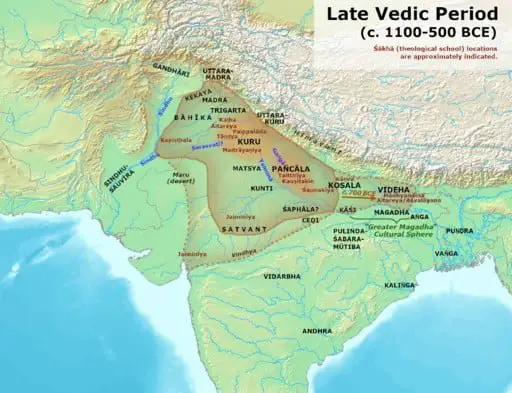The Aryan Invasion is a topic that has been widely debated for a long time. It is an ancient tale that has been passed down from generation to generation. However, recent research and archaeological evidence have dispelled many of the myths surrounding this story. In this article, we will delve into the topic and debunk some of the misconceptions about the so-called Aryan Invasion.
Dispelling the Myth of Aryan Invasion
The Aryan Invasion theory was first proposed in the late 19th century by British scholars. According to this theory, a group of Aryan people migrated to the Indian subcontinent from the northwest, around 1500 BCE. They were said to have conquered the local Dravidian people and established the Vedic civilization.
However, there is no archaeological evidence to support this theory. In fact, recent research suggests that the Vedic civilization was developed by the indigenous people of the Indian subcontinent, who had their own unique culture and traditions.
The Aryan Invasion theory was also used by the British to justify their rule over India. The British considered themselves to be the descendants of the Aryans and believed that they had a superior culture and civilization compared to the native people of India.
Unraveling the Ancient Tale with Facts
The term ‘Aryan’ does not refer to a particular race or ethnicity. It was first used by scholars in the 19th century to describe a group of people who spoke the same language and shared a common culture. The Aryan language family includes Sanskrit, Persian, and other languages spoken in ancient Iran and India.
The Vedic civilization was not a product of invasion but a result of the indigenous people of India. The Rigveda, the oldest text of the Vedic tradition, mentions the names of several rivers, mountains, and cities that are located in the Indian subcontinent. This suggests that the Vedic people were native to the region and had a deep knowledge of the land and its geography.
The Vedic people were not a homogeneous group. They had different social classes and occupations, ranging from priests and warriors to farmers and artisans. The caste system, which is often associated with the Vedic civilization, was not a rigid system but a fluid one that allowed for social mobility.
The Vedic people had a rich and diverse culture that included music, dance, theater, poetry, and philosophy. They had a deep reverence for nature and worshipped various deities that represented the different aspects of the natural world.
The Aryan Invasion theory has been debunked by several renowned scholars, including Dr. B.R. Ambedkar, who was the chief architect of the Indian Constitution. Dr. Ambedkar argued that the Aryan Invasion theory was a colonial construct that was used to justify the subjugation of the native people of India.
In conclusion, the Aryan Invasion theory is a myth that has been perpetuated for too long. It is time to dispel the misconceptions and unravel the ancient tale with facts. The Vedic civilization was a product of the indigenous people of the Indian subcontinent, who had their own unique culture and traditions. Let us embrace our rich and diverse heritage and celebrate the contributions of our ancestors to the world.
The story of the Aryan Invasion has been a topic of discussion for many years. However, with recent archaeological evidence and research, it is now clear that the theory is nothing more than a myth. The Vedic civilization was developed by the indigenous people of the Indian subcontinent, who had their own unique culture and traditions. It is time to celebrate our rich and diverse heritage and acknowledge the contributions of our ancestors to the world. Let us move forward with a renewed sense of pride and respect for our history.
Image credit
Avantiputra7, CC BY-SA 3.0, via Wikimedia Commons

